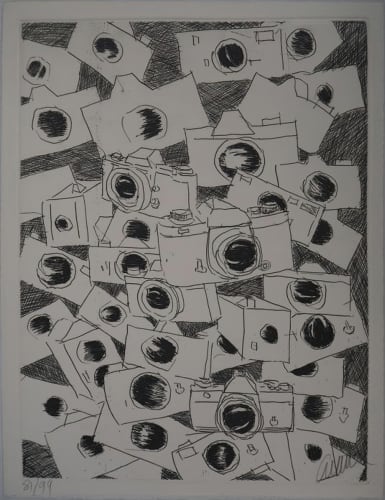ARMAN
FRENCH-AMERICAN, 1928-2005
Inspired by the Dada movement, Arman (born Armand Pierre Fernandez) created unconventional sculptures made from accumulated trash. In the mid–20th century, he began exhibiting random assortments of garbage displayed in glass boxes, which he dubbed “Poubelles” (“trash cans”). He also introduced his “Accumulations”—assemblages of multiple iterations of the same object, which ranged from toy cars and paint tubes to retainers and faucets. Arman often adopted destruction as a strategy for creation: He sliced, burned, and smashed objects such as bronze statues and musical instruments, then mounted fragments on canvas, encased them in plexiglass, or presented them alone. In the 1960s, he was associated with Nouveau Réalisme—a European movement founded in response to American Pop art—along with close friend and fellow artist Yves Klein. Arman exhibited extensively throughout his lifetime and received numerous awards. His work has sold for six figures at auction and belongs in the collections of the Museum of Modern Art, the Hirshhorn Museum and Sculpture Garden, the Tate, the Stedelijk Museum, and the Tel Aviv Museum of Art, among other institutions.
